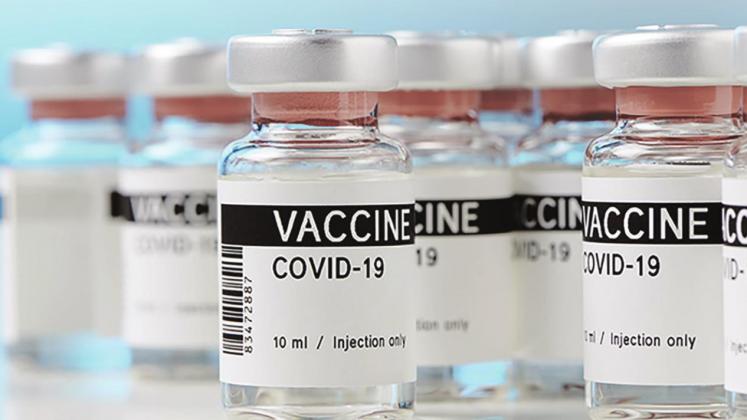Health‐care workers, long term facilities will be focus of initial phase
Oklahoma’s frontline health care workers received a good dose of COVID-19 news last week when the state announced the upcoming arrivals of a vaccine to fight the virus.
The state is slated to receive about 43,000 doses initially, 33,000 from Pfizer and 10,000 from Moderno, between Dec. 11-14. The initial vaccines will go to people who are classified in the first phase of the state’s distribution plan.
Those include public health staff, long-term care staff and residents and health care workers working directly with inpatient COVID-19 care. The state estimates about 115,000 people are classified in the first phase.
“We want to make it clear,” Col. Lance Frye, the state’s Commissioner of Health, said. “This does not mean the general public will have access to the vaccine at that time. Those initial doses will go to our phase one people, which are the most at-risk population that are on the front lines.”
The state will receive additional vaccines every one to two weeks, Frye added.
“We anticipate the general public will have access to the staff in the first part of 2021,” Frye said.
The state first will focus on large population centers and critical care facilities across Oklahoma. Rural communities will lag slightly behind in receiving the vaccines, Frye said.
In Watonga, that means vaccinations will go to hospital staff about two weeks after the initial doses hit the state.
The hospital last week was in the process of submitting a number to the state of vaccines it will need, said Bobby Stitt, a Mercy Hospital administrator.
“Part of the process is we have to ask our coworkers if they want it,” he said. “Some of them may decide not to take it. We are gathering that information now, but they do have enough to give all of our staff a vaccine if they wanted it.”
Watonga Memorial Hospital employs about 50 people, Stitt said. The hospital will not make it mandatory that employees receive the vaccine.
“We will definitely offer it to all of them,” Stitt said. “Just the reality, this is a new vaccine, sometimes people are fearful of that so we don’t feel like we could make it mandatory.”
The first phase is focusing on acute-care hospitals treating COVID-19 patients first, said Keith Reed, the state’s deputy commissioner of health.
“In the days following initial vaccinations at acute-care facilities, remaining vaccine will be re-distributed to our public health districts around the state in continuation of the hub and spoke model,” Reed said. “Doing so will move vaccine throughout the state to reach our priority populations regardless of location.”
The vaccination effort is a huge undertaking he said.
“Please keep in mind that an effort of this magnitude will not happen overnight. It will take some time, and our efforts will continue over the days, weeks and months following initial receipt of vaccine,” he said. “We ask for patience and understanding as we progress through this very complicated endeavor.”
All Oklahomans, particularly those in rural communities, will have access the vaccine as it becomes available, he said.
In Watonga, Stitt said staff members are encourage about news of the vaccine.
“You can see that progress is being made,” he said. “This is a part of that. The general view is that everybody is pretty happy to hear that this is progressing.”
Both the state’s top doc and Stitt warn that the vaccine isn’t the end of COVID-19.
“We want to remind everyone that, though we are very enthusiastic about the arrival of the initial doses of the COVID-19 vaccine in our state, this won’t be an immediate solution,” Frye said.
He said it is vital that Oklahomans continue to take precautions to slow the spread. “Everyone should
“Everyone should continue to wear a mask, wash their hands, and watch their distance as ways to truly prevent the spread of the coronavirus,” Frye said. “These actions in conjunction with vaccine can make a huge difference in keeping our families and communities safe and healthy in the long term.”
In Watonga, Stitt said COVID numbers remain alarming. He realizes people are weary of the pandemic but remaining vigilant and reasonable is key.
“Please wear your masks. Please do everything you can to social distance,” Stitt said. “We understand that the holidays are upon us. We’re already seeing the impact of people making that decision to congregate and we’re seeing a rise, even our community in Watonga, of patients coming in with those types of symptoms. We’re very concerned about that. We’re just asking everyone to adhere the best standards that are out there.”
Health officials are positive about the vaccine, Frye said.
“So far the information that we have received about the safety and efficacy of it is outstanding,” he said. “I think it’s going to be a gamechanger for us here in Oklahoma and throughout the world. We’re very enthusiastic about it, but we all have to continue what we can to decrease the spread – because we have the highest numbers and highest community percent positivity that we’ve had throughout this pandemic right now.”
Did you know?
The Pfizer vaccine includes two doses. The second dose must be taken about 21 28 days after the first dose.

